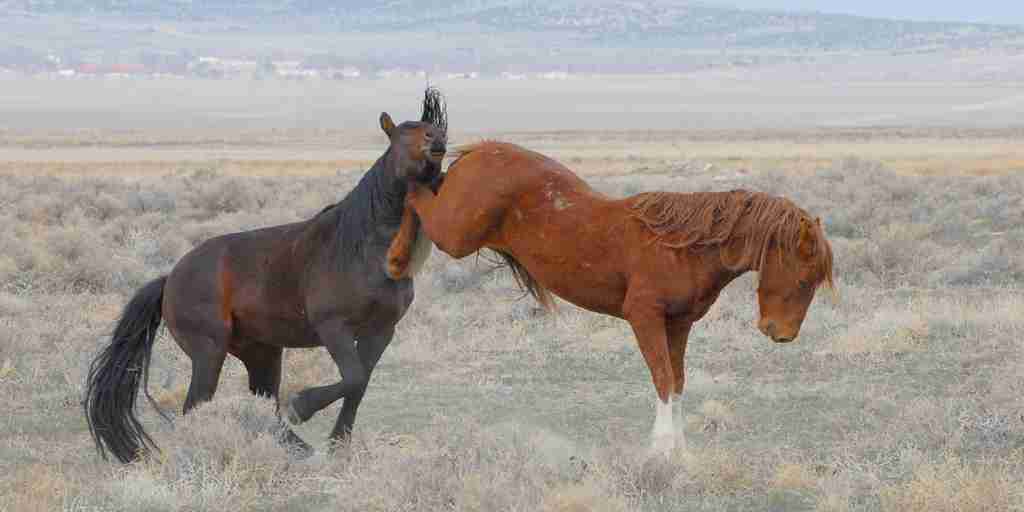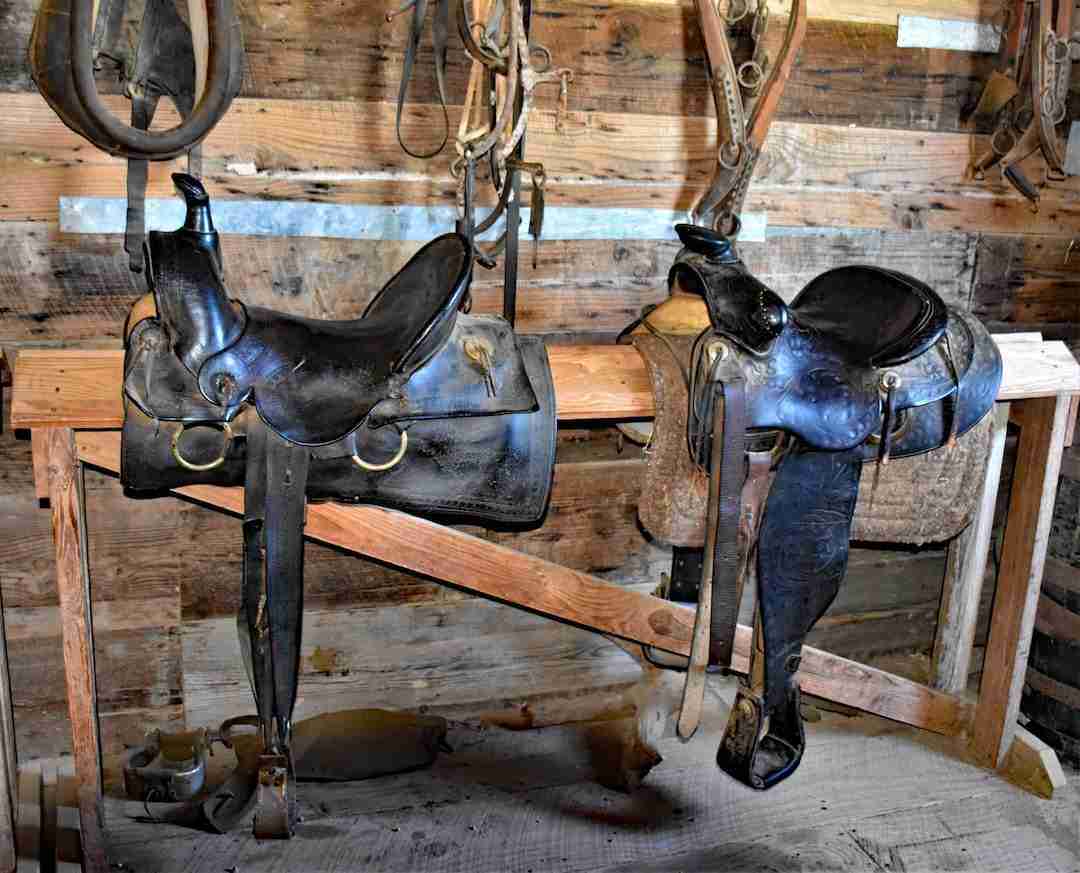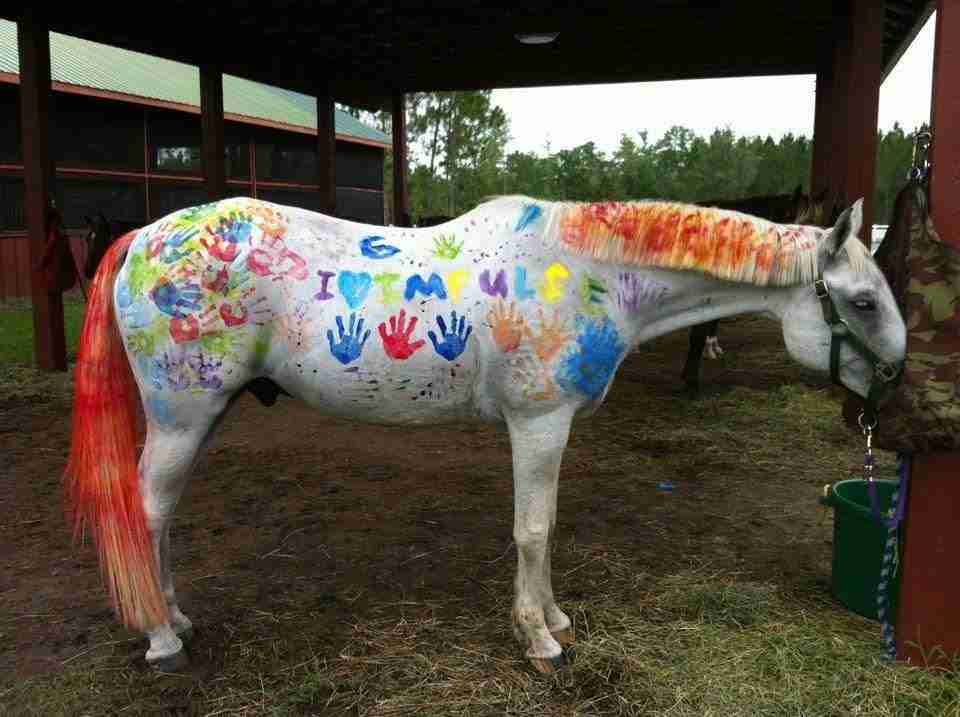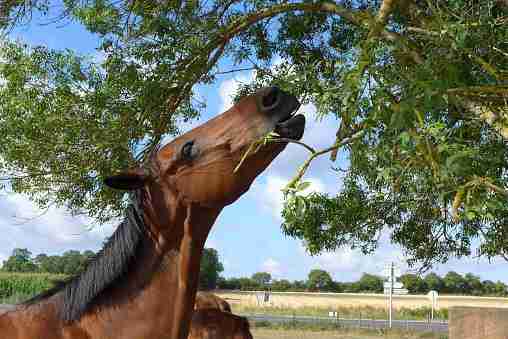Alongside cats and dogs, horses are perhaps one of the oldest human companions and accomplices and have been in service to humans for thousands of years. We have used them as labor and pack animals, as well as sport, battle, and recreation – but how powerful is a horse kick?
A horse kick can travel up to 200mph and deliver up to 2000 Psi of force. This is more force than a heavyweight boxer can deliver. Horse kicks can vary between 1200 and 2000 pounds of pressure per square inch depending on the size of the horse and can do serious damage and even cause death.
Most of the time, horses are pretty benign. Still, there are reports of people and other animals being kicked by horses and sustaining injuries that range from abrasions and bruising to broken bones and concussions, so let’s find out more about the power of a horse’s kick.
How Powerful Is A Horse Kick And Why?
For starters, this is a very strong animal. Horses can weigh between 600 and 1000lbs, and their powerful hind leg and hip muscles that support the horse’s weight are the driving force behind those powerful back legs.
When you have muscles and the skeletal structure designed to support humans or loaded weight and carry that over long distances, you will have a lot of power in those muscles, which allows the horse to kick with the energy it does.
With horses, it’s not only the back legs that can kick, but the front ones too, and while the front legs don’t have the same kind of power the back ones do, they can still cause severe injury due to the horseshoes and the height of the legs and strength of the front hooves.
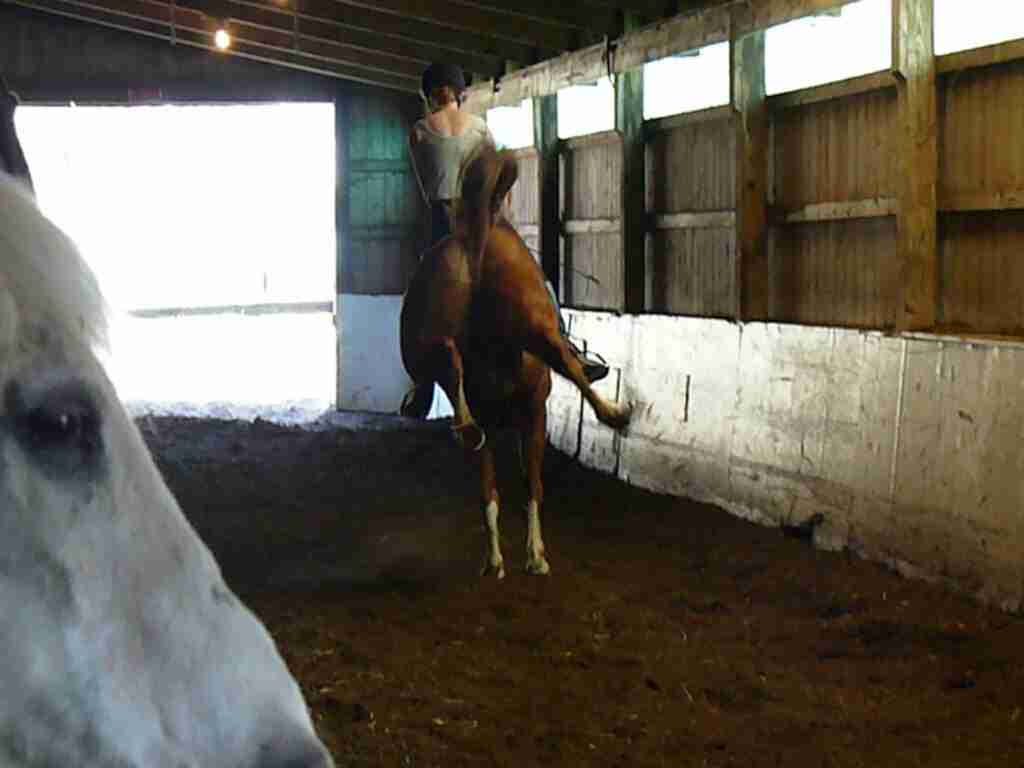
How Does A Horse Kick Compare To A Human Kick?
The average adult male human can deliver a kick with about 1000 pounds of force, while kids can exert roughly 600 pounds of force. Properly trained martial artists can kick more than a ton with force, with proficient Tae Kwon Do practitioners rated as the most powerful kickers alongside Muay Thai fighters.
These types of kicks typically use spins to generate more force, but the most powerful kick is probably the sliding or stepping side kick found in Korean Martial arts systems like Tae Kwon Do and Tang Soo Do.
How Does The Power Of A Horse Kick Compare To Other Forces?
To put the power of the horse kick in perspective, we will look at some other actions in nature and people and compare those forces to that of the kicking horse.
As a point of reference, the power generated by a horse kick is about the same force as being struck by a small to medium size car doing 20mph. If you have ever been bumped by a car accident at a very slow speed, it has enough force to knock you down, so getting hit at 20mph will do some damage.
We will look at twelve actions ranging from professional sports like a baseball swing and a golf swing to the bite force of some of Earth’s most fearsome predators and see where the horse kick fits into that scale.
Starting, we have the bite force of a grizzly bear at 975 Psi, followed by the polar bear’s bite force at 1200 Psi. The lion comes in at 1275 Psi, with the gorilla following with 1300 Psi. Remember, these are all measures of the power generated through the sharp teeth of these animals and not through the much wider impact area of the horse’s hoof.
A heavyweight boxer can deliver around 1425 Psi, and one of Africa’s most dangerous animals, the hippopotamus, has around 1800 Psi of bite force in those massive jaws. The horse kick comes in above the hippo at 2000 Psi.
It’s amazing to think that more people are killed by hippos than by horse kicks yearly, even though the horse kick is more powerful.

Moving into the top end of the force scale, the great white shark can deliver a bite force of around 4000 Psi which is on par (so to speak) with force generated by a PGA Pro’s golf swing! Maybe that’s why Greg Norman was known as the Great White Shark.
In third place on this list is the crocodile that can exert some 5000 Psi of bite force, and here’s one for all you baseball fans- an MLB batter is second on this list delivering more than 8300 pounds of force. While a horse’s kick is straight out, the baseball swing uses the body’s torque to generate power for the swing.
In the first place, and not surprisingly, is the fearsome Tyrannosaurus Rex with a bite force of around 13000 Psi, which is 6,5 times the force of a horse’s kick!
Is the horse kick powerful? You bet it is! But how much damage can it cause to a human?
Other Articles You May Also Be Interested In
What Is A Grade Horse?
Why Horses Show Their Teeth
What Are Ergots and Chestnuts on Horses?
What Is A Grulla Quarter Horse?
Who Is The Boss Mare And What She Means To The Herd
What Kind Of Injuries Can A Horse Kick Cause?
Ask anyone unlucky enough to be kicked by a horse, and their injuries will range from cuts, abrasions, and bruising to broken ribs, broken arms, severe internal damage like ruptured organs and blood vessels to, concussion, and in a few isolated cases, death.
The tremendous amount of force generated on impact creates pressure waves in the body, which is more than enough to break bones and cause other severe injuries. Of course, this will depend on where you get kicked and where you land after being kicked.
The biggest concern with getting kicked is if you are in an enclosed space like a stable, as you could be sandwiched between hard surfaces and thrown against a wall or door, which could cause more damage.
Getting kicked in the head by a horse is thankfully a very rare occurrence but could be fatal in most cases as there is enough force to shatter a human skull.
A kick to the chest could result in cardiac arrest due to impact or ruptured blood vessels. Most horses have horseshoes, and that steel plate making contact with soft tissue or bone will damage, but the force of the kick is the same regardless of whether the horse has shoes on.
In an average year, there are about 20 deaths caused by horse-related incidents, but most are from accidents and not from humans being kicked. On average, less than 0.6 people die yearly from being kicked by a horse.
Why Do Horses Kick?
Horses are mostly calm and relaxed creatures and don’t often display aggression towards humans unless they feel threatened or frightened. Like many other animals we live with, like cats and dogs, horses will display warning signs before they act, whether biting or kicking.
Horses will also kick out to fend off potential predators or defend their young, but even then, they will warn before taking any aggressive action, so here are the warning signs to look out for when dealing with horses.
Horses may kick if they experience strange behavior or are in pain and assume you are the cause. Kicks can happen during bathing or grooming, and there is a higher risk if the person doing it is new and unknown to the animal.
They can also kick out when they sense something behind them, and people can often get kicked unintentionally when thrown from a horse or falling backward off the horse and landing behind them.
When horses are eating, it is best not to be in the stall with them, as they can kick out in that situation. When dealing with large animals and their food and space, giving them a wide berth is best to minimize any risk of injury to yourself or the horse.
Like cats, horses generally have their ears upright when relaxed and calm, but if a horse lays its ears flat, that is a warning sign that they are unhappy or feeling unsafe or anxious. If you see this display, the best thing you can do is move away and give the animal space.
Tail swishing is another sign that there is some level of aggression coming, and if the threat does not diminish, they may begin to shift their weight to one leg in preparation to kick. When working with these animals, always be aware of body language, as this can save you from being kicked or bitten.
A horse can bite with 2,5 times the force you can, exerting about 500 Psi through their jaws and teeth, so warning signs should never be ignored, and you do so at your peril.
How To Be Safe Around A Horse
Being around these majestic creatures can be very therapeutic, and for the most part, there is little danger in doing so, but there are some precautions you can take to be safe around horses.
If you notice an obviously agitated horse, give it plenty of clearance and ensure that no smaller animals like dogs, cats or other horses intrude into that space. This will calm the situation and reduce the risk of biting or kicking.
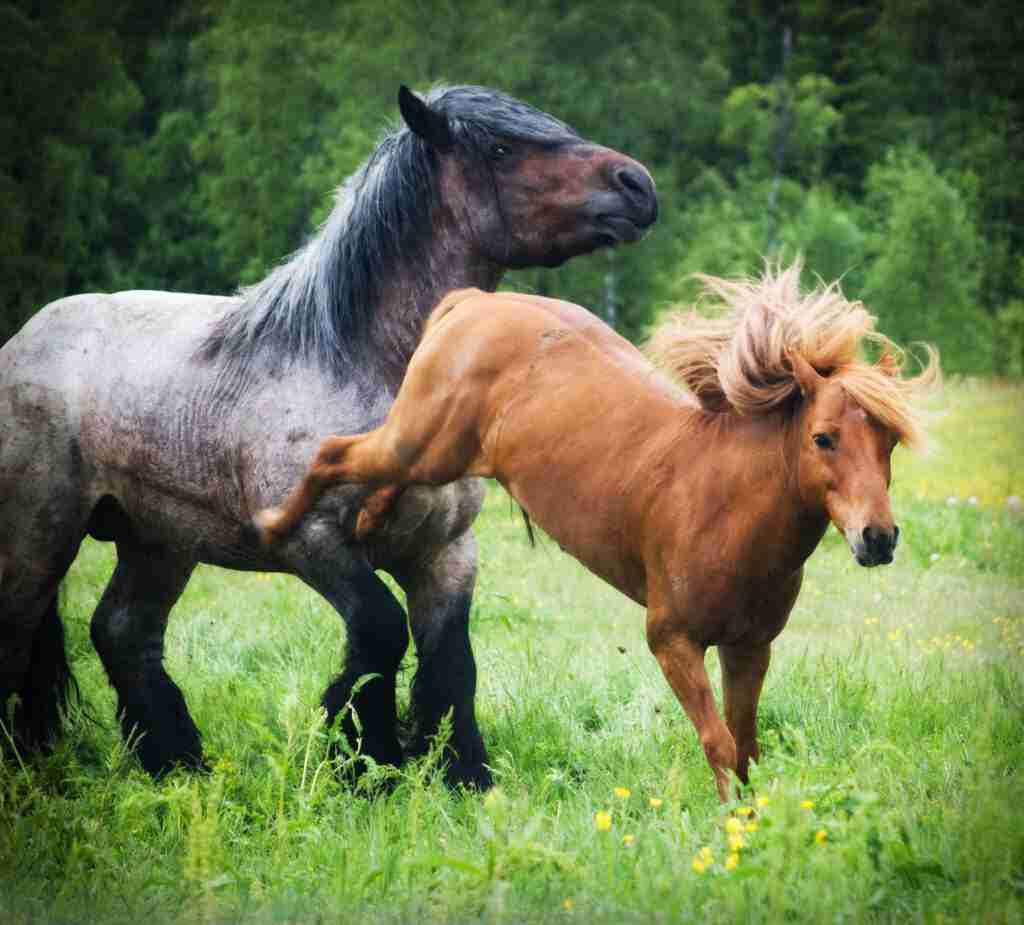
Avoid Walking Behind A Horse Where Possible
It is always better not to walk around the back of a horse without letting them know you are there or at least moving there. You may need to check a back hoof or leg, and you can do this by placing your hand along the flank and moving it slowly toward the rear, as this tells the horse what you are doing and where you are.
Staying close to your horse when doing this reduces the force they could deliver when they kick and the hand running down from the neck to the rear tells the horse you are not a predator or stranger that they need to be wary of.
Always Wear A Helmet When Working With A Horse
Much like wearing a seatbelt in your car, wearing a helmet when working with horses is common sense, and while it may not prevent you from being knocked unconscious if you are unfortunate enough to get kicked, it may well save your life.
Many riders will also wear a type of body armor designed to minimize the impact if the rider is thrown from the horse at speed, and wearing this when working with a horse is not a bad idea either!
Avoid Being In A Confined Space With A Horse
This may not always be possible, as moving horses in and out of stables and trailers is common. Remember that horses can weigh more than five times what you do, and getting crushed against the side of a trailer or stable wall can result in injury.
In most cases, there is little to no danger when working with horses that you know and that know you, but like working with a gun, even if it’s your own, always treat it with respect and like it’s loaded, so you don’t become complacent and do something silly.
Conclusion
A horse kick is very powerful; you would not want to find that out firsthand for any reason. With enough force to kill, shatter bones, and cause severe bruising, injuries caused by horse kicks can take a long time to properly heal and may even require physical or emotional therapy.
When working with horses, it is always advisable to have a working knowledge of their body language so you can be aware of any signs of impending aggression, as well as knowing the personality of the particular horse you are working with so you have little or no chance of getting kicked.
Resources

